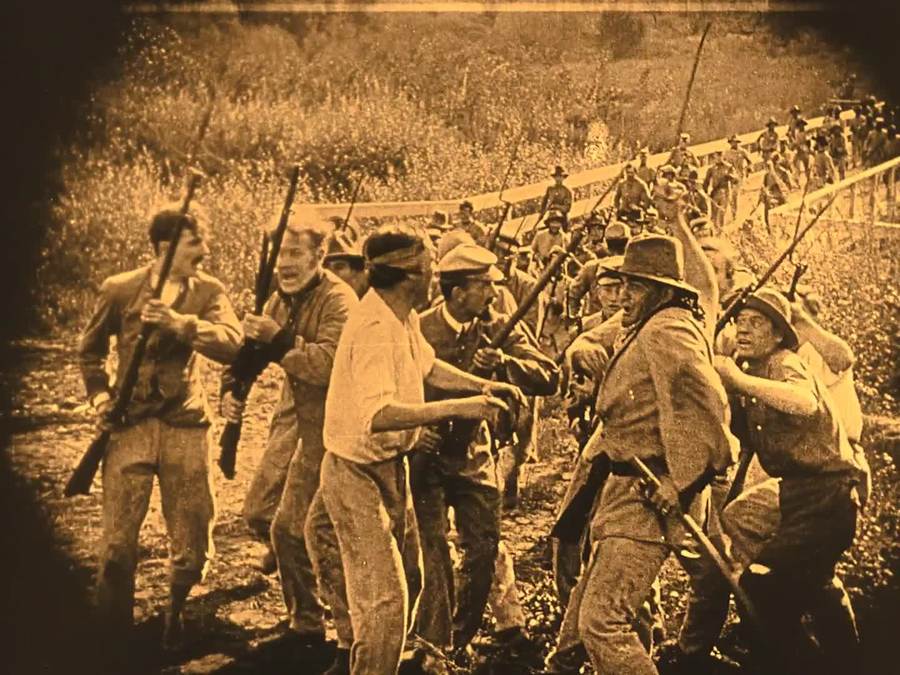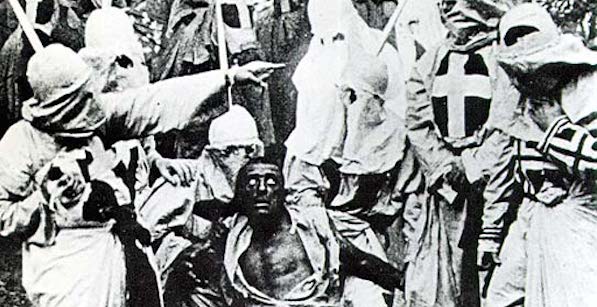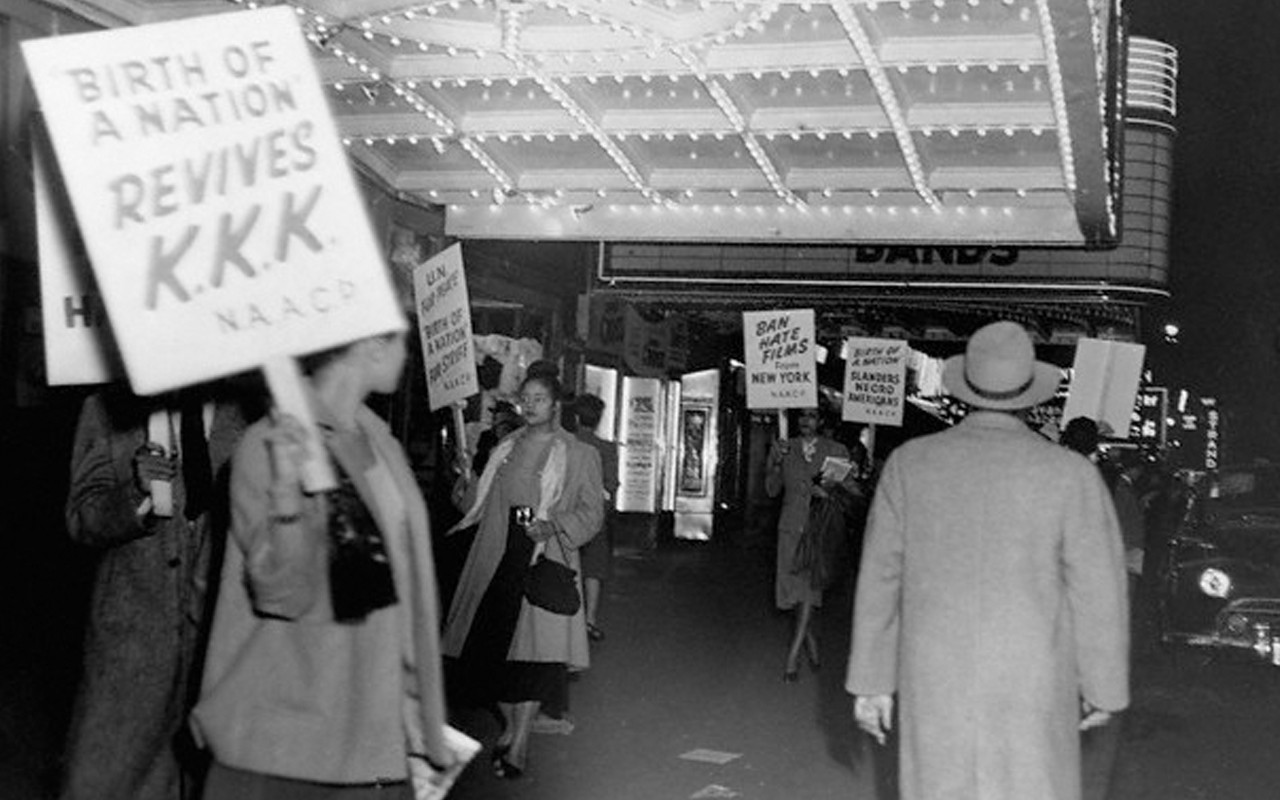
[Editor’s note: A curated D.W. Griffith series plays Mondays at Film Forum in New York. March 3, 2015 marks the 100-year anniversary of The Birth of a Nation‘s New York premiere. It first screened in Los Angeles February 8, 1915.]
That D.W. Griffith, a self-educated theater actor and failed playwright from rural Kentucky whose father fought for the Confederates during the Civil War carried his racism along with his genius into a medium that transformed the twentieth century is one of many unfortunate facts in film history. As The Jazz Singer, starring Al Jolson in blackface, is to the talkies, as Nanook of the North and Triumph of the Will are to documentaries, what Gone with the Wind is to Technicolor, what Elia Kazan’s apologia for naming names, On the Waterfront, is to screen acting, The Birth of a Nation is to the narrative feature film. An entire genre, the western, is virtually unwatchable for its harmful and inaccurate portrayals of Native Americans and the way the West was won. I can’t even make a complete list of nationalities or heritages maligned—some maligned still—as a matter of course in the movies (Jews, Arabs, Mexicans, pick an Asian country…), never mind the LGBTQ spectrum and women. It’s a long ugly bigoted history we drag behind us, and not just in film. We can’t change it. But we can look at differently.
Recent scholarship and archival sleuthing is helping us do just that, uncovering new visual evidence of the black independent film industry in the silent era. An unfinished film starring vaudeville sensation Bert Williams about the courtship of a young woman, uncovered and assembled by MoMA’s curators, shows a thriving middle-class black America still largely invisible in mainstream culture. Kino recently announced plans for an African American silent cinema box set. Cara Caddoo builds on the research of Thomas Cripps, Donald Bogle, Ronald Green, Pearl Bowser, Jane Gaines and many others in her new book, Envisioning Freedom, shedding new light on the movies of the Chitlin’ Circuit, black films about black lives playing for black audiences. And for American film history’s biggest sore spot, Dick Lehr’s 2014 book The Birth of a Nation recasts the landmark film in light of the protests organized by Monroe Trotter, a Harvard graduate and newspaper editor whose father fought in one of the Union’s “colored” regiments and rallied for equal pay for black soldiers. (Instead of compromising, the regiment served unpaid for an entire year.)
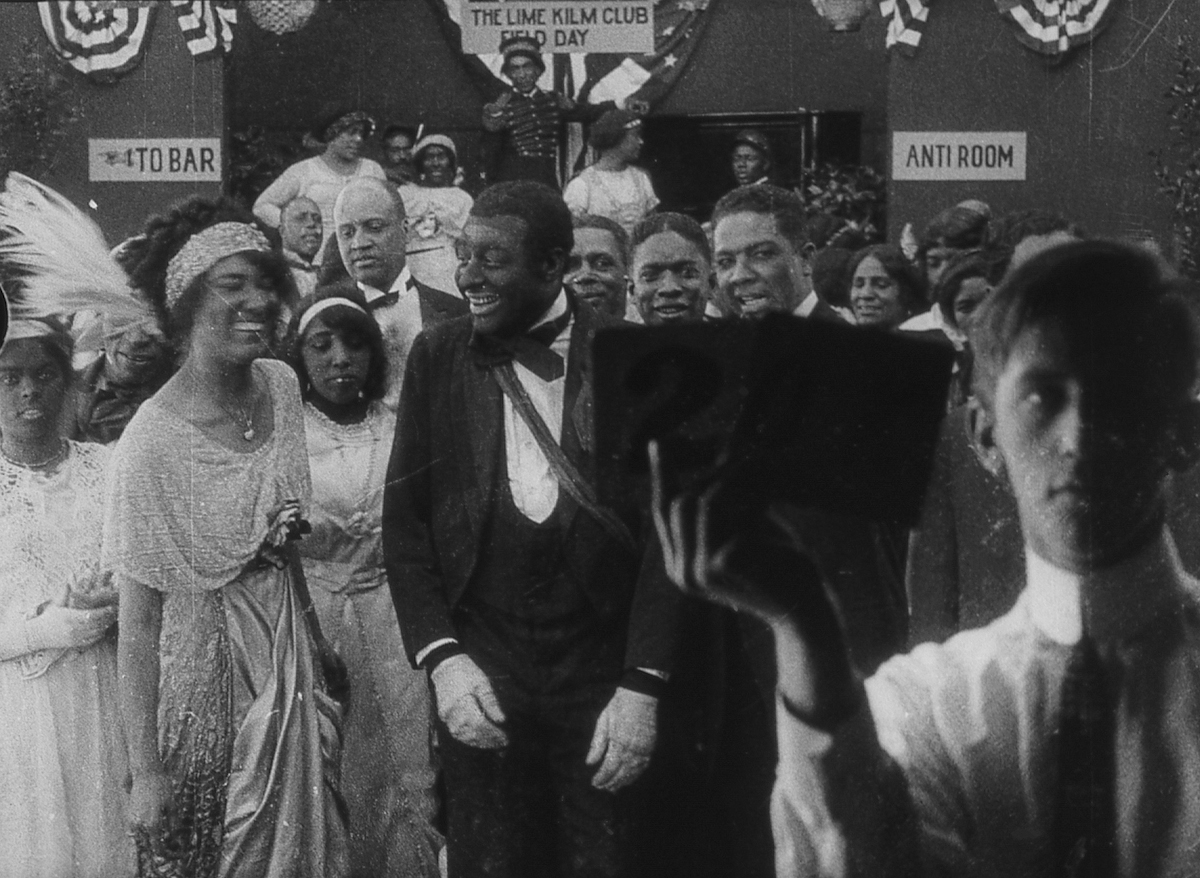
Trotter—along with the NAACP—helped expose the racist depictions and erroneous history in The Birth of a Nation to an otherwise oblivious nation. Not too many listened but the persistent and sustained effort had Griffith one day admitting that the film should be reserved for instructional purposes, for studying the art of film, and not be shown in public—a major step for the director who never publicly faced his racism but little comfort to the kid who enrolls in film school.
The Birth of a Nation was Griffith’s magnum opus and he knew it. It took everything he had learned and developed in his seven years of filmmaking about timing, cross-cutting, close-ups, building suspense, conveying emotion and mood in composition and lighting and movement and put it into an unprecedented twelve-reel feature. He wanted recognition, and he deserved it after toiling anonymously in a system that did not give public credit to its workers, preferring to “brand” the studios instead. He wanted ads in the trades identifying him with the title and an opening night at a legitimate theater of a kind that had already been bestowed on the imported Italian feature-length films, among them Que Vadis? and Cabiria. He wanted a full orchestra to play a rousing score to include Wagner’s Ride of the Valkyries and the “Klansmen call” (which Griffith used to spontaneously cry out on set during the shoot). He wanted the world to see the potential of film as an art. He wanted a share of the profits.
He built sets and rehearsed actors on the good faith (if not entirely solvent) support of Harry Aitken back in New York. While in preproduction and later editing the film, he still supervised or personally cranked out the short films required of his contract—and to keep the studio afloat. When the money ran dry as it periodically did, he spent lunch and setup breaks cajoling members of his crew and local businesspeople into buying shares of the finished product, raising about half the just over $100,000 budget, the most expensive American film to date. One day he invited the Clune of Clune’s Auditorium to watch the filming of a big scene and hired a small brass band to play along, using the moment to demonstrate to the impresario how much better opening night could be with his theater’s orchestra. Clune wrote a $15,000 and was promised the Los Angeles premiere, for which it was said the applause “came in deafening waves.” Composer Joseph Breil’s “The Perfect Song,” the love song from Birth, became a hit on its own.
Like a well-cut trailer for a terrible film, Birth advertised a false American history. The film was so overwhelming in scope and power that audiences became unable, unwilling to critique its dangerous content. It might have been the first time this happened: a film so large in scale and so beautifully crafted that it washed away all reason. Such white-washing might have been excusable in a film about a war two hundred years before Christ—in light of what happened in Italy in 1922, maybe not so much—but certainly not fifty years after the adoption of the Thirteenth Amendment with the first generations removed from slavery still under the heel of an unsympathetic-at-best, murderous-at-worst majority. That the country was racist wasn’t news to blacks. MoMA curator Ron Magliozzi speculates that the reason the Bert Williams film was never released by its white producers is that Birth had soured race relations and the film’s portrayals didn’t fit the stereotypes to which white audiences had become accustomed. That Birth exposed the nation’s profound racism on a wide stage is stern consolation.

Griffith and his producers knew trouble was coming, as the NAACP had tried to get the film censored in L.A., and, for the film’s East Coast debut, the organization lobbied members of the New York City’s board of censors to ban it or at least insist on cuts. Meanwhile, to generate publicity for the NYC premiere, horses and their riders were hired to gallop around Broadway outfitted with Klan hoods and robes, apparently without incident. Thomas Dixon, the North Carolina native and unapologetically bigoted author of the original source material (a successful novel and successful play), helped forestall negative reaction to the film by writing to his old school chum Woodrow Wilson and arranged for the first ever White House screening.
D.W. Griffith at Biograph: The Pre-Birth OeuvreBiograph became known as the studio with the highest quality product and this was largely because of D.W. Griffith, a man who remained an anonymous force behind the best movies until he finally broke with the outfit in 1913. Paid by the foot, Griffith fits Malcolm Gladwell’s outlier theory: churning out volume, two one-reel films a week, he dominated the craft and perfected techniques: cross-cutting being among the most famous. More important, he recognized the movies’ potential as an art form when most everyone else looked down on the “flickers” as low-brow amusements for the uneducated masses. Here’s five films that show Griffith strengths.
A Corner in Wheat (1909)
Biographer Richard Schickel wrote that A Corner in Wheat is Griffith at his artistic best, combining realism and lyricism with a narrative economy to make a point, to persuade. One contemporary reviewer wrote: “It is an argument, an editorial on a vital subject of deep interest to all.” The scenario based a Frank Norris story about the effects of wheat speculation on the small farmer. Griffith portrays the farmer’s life in moving tableaux reminiscent of the pastoral paintings of Jean-François Millet. If Griffith had kept adapting modern literary works in this vein, Schickel speculates he could have been on the forefront of pioneering a vibrant realism in cinema, instead, he calls the film “falsely promising.”The Unchanging Sea (1910)
A “California picture” made the first winter the Biograph team went West to take advantage of the better weather, Griffith played with the narrative possibilities of Los Angeles’ vast surrounding landscapes. Far from nagging studio overlords who reined in spending and naysaid his experimentations, particularly in length, Schickel says that Griffith “allowed some of the creative tension to uncoil for the first time.” He set his actors against the wide open spaces not available to him in the tightly packed Northeast and slowed things down at a time when one contemporary reviewer summed up the era’s industrial-electric-movement madness: “speed was the thing.” The same reviewer also noted the film’s understated acting style. “Every thought and feeling is expressed with wonderful force but with scarcely a gesture and with perfect naturalness.”The Musketeers of Pig Alley 1912
Lillian Gish’s struggling musician husband gets a payday that becomes the target of a couple thugs. Here Griffith uses the density of New York’s Lower East Side as a bustling backdrop to the scheming of a gang of criminals, a major preoccupation in the nation’s newspapers. (Schickel compares the photography to the work of Jacob Riis.) A plot is hatched in a crowded alleyway as neighbors pass in and out going about their business. Snapper Kid enters the frame, smoke trail first and seems to appear always out of nowhere. Here Griffith demonstrates his artistic use of the whole film frame, in addition to a sympathetic humanism and his skill with actors. It’s not the first gangster film but Elmer Booth as Snapper Kid does a move with his hat that’ll make you feel like you’ve seen James Cagney’s balletic wise guy decades early.The New York Hat 1912
Mary Pickford was still Gladys Smith the day she walked into Biograph’s New York studio looking to pick up some off-season work in the flickers. The fifteen-year-old, as she would for some much of her long career, specialized playing young girls on the theater circuit and Griffith was so impressed he quickly moved her from a daily wage to a weekly salary. Her biographers say she had an instinct for how to come across for the camera, perceiving early that subtlety and restraint worked better on film than on the stage, in the words of Eileen Whitfield, “using small well-chosen movements—biting her lip, perhaps or fiddling with a shawl.” She fought constantly with Griffith, refusing to exaggerate in her gestures when he demonstrated how to do a scene. “I’m a young girl,” she once told him, “I don’t go into ecstasies.” Once he pushed her down, she once bit him, but she stayed with him on and off through 1912’s New York Hat, her final film for Biograph, having absorbed all she could with him. On the other hand, Schickel writes that Pickford’s time at Biograph was a lost opportunity for the director: “[H]e refused to learn anything from a young woman whose intelligence about the medium … was equal to his.”The Girl and Her Trust 1913
A remake of The Lonedale Operator, about a railway employee who risks everything to safeguard the payday lockbox, this film is not only a study in crosscutting (with a climatic chase between a train and a handcart) but also shows Griffith’s ingenious use of the frame to drive plot and develop a bit of character. Danger lurks in the first few minutes as one of the telegraph operator’s suitors leaves the office, crossing the entire back of the frame, moving left, while the stowaway robbers lie hidden in a ditch in the right foreground. Back in the office, Griffith frames the robbers in the grate-covered window just behind the operator’s head, while the majority of the shot is taken up with the door, shot at such an angle that it looms large as a way in for the thieves. It’s masterful. We also get a McGyver-ish heroine, played by Dorothy Bernard, who shoots a bullet through the keyhole with a hammer and pair of scissors, in a scene that still has the power to put you on the edge of your seat.
Griffith biographer Richard Schickel says he couldn’t track down how the “history written with lightening” quote came to be but one can imagine Dixon’s good-old-boy hand in it and Griffith’s in disseminating it. You can also imagine nervous klatches of political advisors engineering a situation in which they could back the president out of the remark attributed to him. Wilson was a Democrat, the first to hold the office in sixteen years, and he paid lip-service to what he saw as a black voting block while instituting segregation policies across federal agencies. (Pandering was a smart move because he was going to need all constituencies on deck for cannon fodder when the U.S. entered the Great War.)
Private screenings also unspooled for Congress and SCOTUS, the press and other movers and shakers. There is no question at all that Griffith, Aitken, etc., knew exactly what they had put on film and no cagey statements put on record by him or his lawyers could change that. Griffith’s own housekeeper told him how hurtful she found the portrayal.
The big push against the film came in Boston, cradle of the American Abolitionist movement and Monroe Trotter’s hometown. Griffith knew the city was a testing ground and his team hired Pinkertons to find out what the opposition had planned. In the courts and in the press, Griffith stood firmly on free speech ground. Filmmakers—like playwrights, novelists, or artists of any kind—demand the retraction of censorship laws and had been in constant battle with reformers, personified by Anthony Comstock’s morality police, to lift current stifling restrictions.
According to Dick Lehr’s detailed account, the NAACP’s tickets for the Boston censorship board’s screening were cut from sixteen down to two, and then were only provided on the condition that the remaining two went to white representatives. That riots broke out over the film is untrue but two hundred protesters led by Trotter showed up one night at Boston’s Tremont Theatre with intentions to disrupt the screenings and crowds outside reportedly swelled to two thousand. The theater manager thought it best to admit whites only and told potential black patrons the shows were sold out. A few slipped in and one managed to hit the screen with a stinky egg.
True to perennial form, police (ten visible in uniform, another sixty in plainclothes inside the theater and another one hundred hidden outside) overreacted, stormed the crowd—one policeman punching Trotter in the face and arresting him, while others, including a purse-wielding lady, tried to protect the popular spokesman. Trotter had been to jail once before, serving a month for disturbing the peace after he and some colleagues publicly upbraided Booker T. Washington for his conciliatory response to Jim Crow. Trotter’s losing argument in his defense that time, interestingly enough, was free speech.
That censorship, a blunt and ineffective tool, was the only approach available to the community rightly affronted was acknowledged within the NAACP, whose leadership expressed a queasiness over a civil rights organization advocating for circumvention of the First Amendment. Censors who insisted on cuts did so on the basis of the perceived immorality of the assaults on female virtue, not because of the hateful portrayals of blacks. The majority of censors let the film go with some minor trims. Trotter and others raised questions about whether Griffith bothered to make them after seeing the film and Trotter soundly noted that if the film had portrayed the Irish in a similar manner the city’s mayor would find a way to stop the screenings.
One New York censor board member had called for the banning of the entire second half, which contains the near-rapes and a climactic rescue by the KKK. No one seemed to mind the insidious setup of the first reels that present the antebellum South in soft-focus idyllic tones, a myth that didn’t get its widespread public busting until Steve McQueen’s deft, unflinching adaptation of the memoir by Solomon Northup. (Allow this quick shout-out for Sarah Paulson’s portrayal of a plantation missus with the power to finally drive away the mythical specters of Elsie Stoneman, Scarlett O’Hara, and Miss Melanie with their backlit halos and fiddle-dee-deeing.)
Lines kept forming, tickets sold, reviews raved, as the film was rolled out in cities across the country. A small-time distributor in a Massachusetts made a personal fortune getting the film out to Boston and the New England territories through the newly formed syndicate, Metro Pictures (Louis B. Mayer of MGM, the bookend “M”s of that mighty acronym). Birth of a Nation was the greenback-laced bedrock on which the Hollywood studio system was built. Exhibitors and distributors cooked their books and pocketed more than their share of the grosses (estimates soar as high as $60 million in 1915 dollars). Griffith had his long-sought name recognition—his celluloid bully pulpit. Movies had a language and the industry a strong profit-motive to repeat itself. Protesters continued to gather and editorials were penned while money, money, money poured in, filling the war chest for fighting off detractors.
Hardly anyone knew how to address this new language’s flaws or limitations. Time was compressed and whole narratives could be cut up and reordered to suit the beliefs (or match the delusions) of the makers. Building suspense and creating cathartic release ossified into a narrative form that, clearly, could not handle the complexities of history and human experience. At the time, the NAACP tried to raise money for a film in response to Birth, commissioning screenwriter Elaine Sterne to begin research for Lincoln’s Dream. But funding was hard to come by and it was going to be impossible to match the scale and scope of Griffith’s achievement in any timely way. But the organization’s membership rolls grew from three thousand to ten thousand during the time it led the fight against the film, and when it realized the film could not be stopped, it published a forty-seven page educational pamphlet, Fighting a Vicious Film, for disseminating at screenings around the country.
Monroe Trotter and the rest of the African American population handled all the bullshit rather valiantly and kept calm even when the film continued to open. (It ran thirty-three weeks in Boston alone.) It was good practice as the years sent more and more trials to their patience. Making his first film in 1920, the writer, director, and producer Oscar Micheaux had to pretend to have a white director on location as he couldn’t be seen bossing around cast and crew in public—imagine a white man clad in jodhpurs having to do the same thing—and a struggling but burgeoning black indie movement was eventually crushed by the expensive transition to sound. We lost generations of black voices—producers, writers, directors, cinematographers, actors, editors, set designers, etc., and got another half century or more of maids and shoeshines instead.
That bedrock on which Hollywood was first built is still standing strong, still very profit-minded, very timid, and very white. Chris Rock recently drew attention to it in an article for the Hollywood Reporter: “But forget whether Hollywood is black enough. A better question is: Is Hollywood Mexican enough? You’re in L.A, you’ve got to try not to hire Mexicans.”
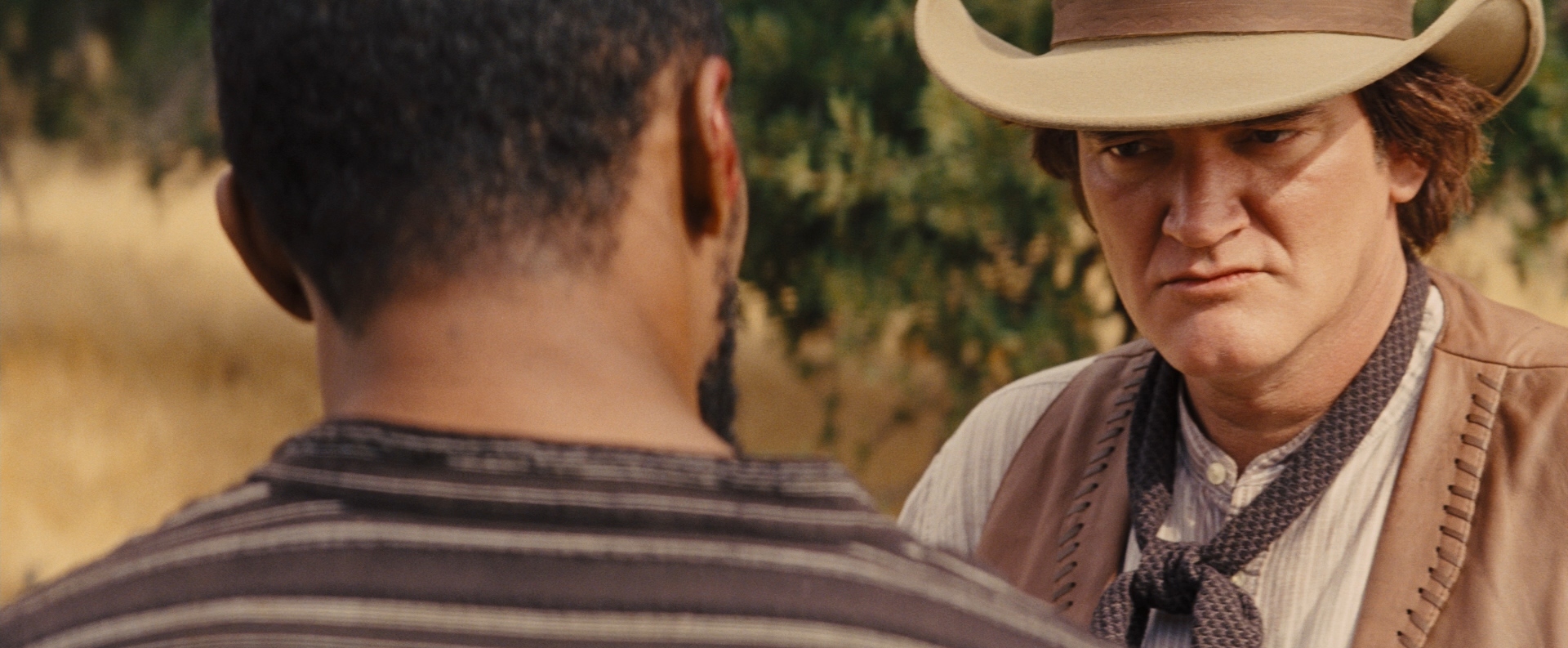
We ourselves face the same queasiness today as did the NAACP a hundred years ago in tests to our commitment to free speech, our tolerance of dramatic license and our disgust at hate speech. Think of the response to Spike Lee’s refusal to see the trope-switching Django Unchained because it was directed by a white man. Think of the kerfuffle over Selma’s wee indulgence in truthiness (how does even this little bit feel?). Then think American Sniper as American hero, not to mention Kathryn Bigelow’s masterful but odious Zero Dark Thirty. How tired are we of seeing Arabs framed in crosshairs or huddled in corners in shades of night-vision green? How tired they are of actually being in them? Think of the collective impact of all that. Then think Charlie Hebdo, Theo van Gogh, and Finn Norgaard. America was an ignorant nation when Birth first opened, it remains ignorant now. It is hardly alone in world. We’ve clearly a long way to go. Let’s hope it doesn’t take another hundred years to get there.
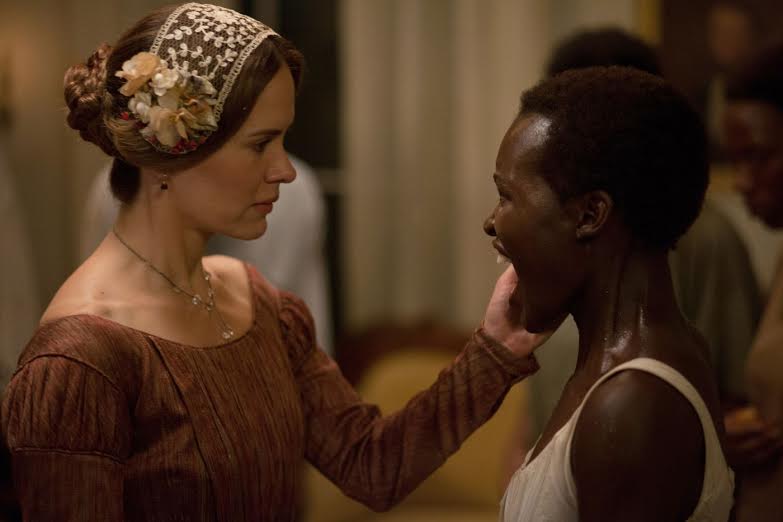
It is possible to learn about the language Griffith helped pioneer (alongside an incredibly stable coterie of cast and crew) without having to watch The Birth of a Nation. Though, if you want an education in the power of film and our susceptibility to it, I recommend it. I’ll admit it only this once: After a screening of Triumph of the Will, I caught myself humming one of the hate-filled documentary’s catchy marches on my way out of the theater. And that might be the most important thing of all about Birth: it’s bracing check on the collective humming of a dangerous tune.

